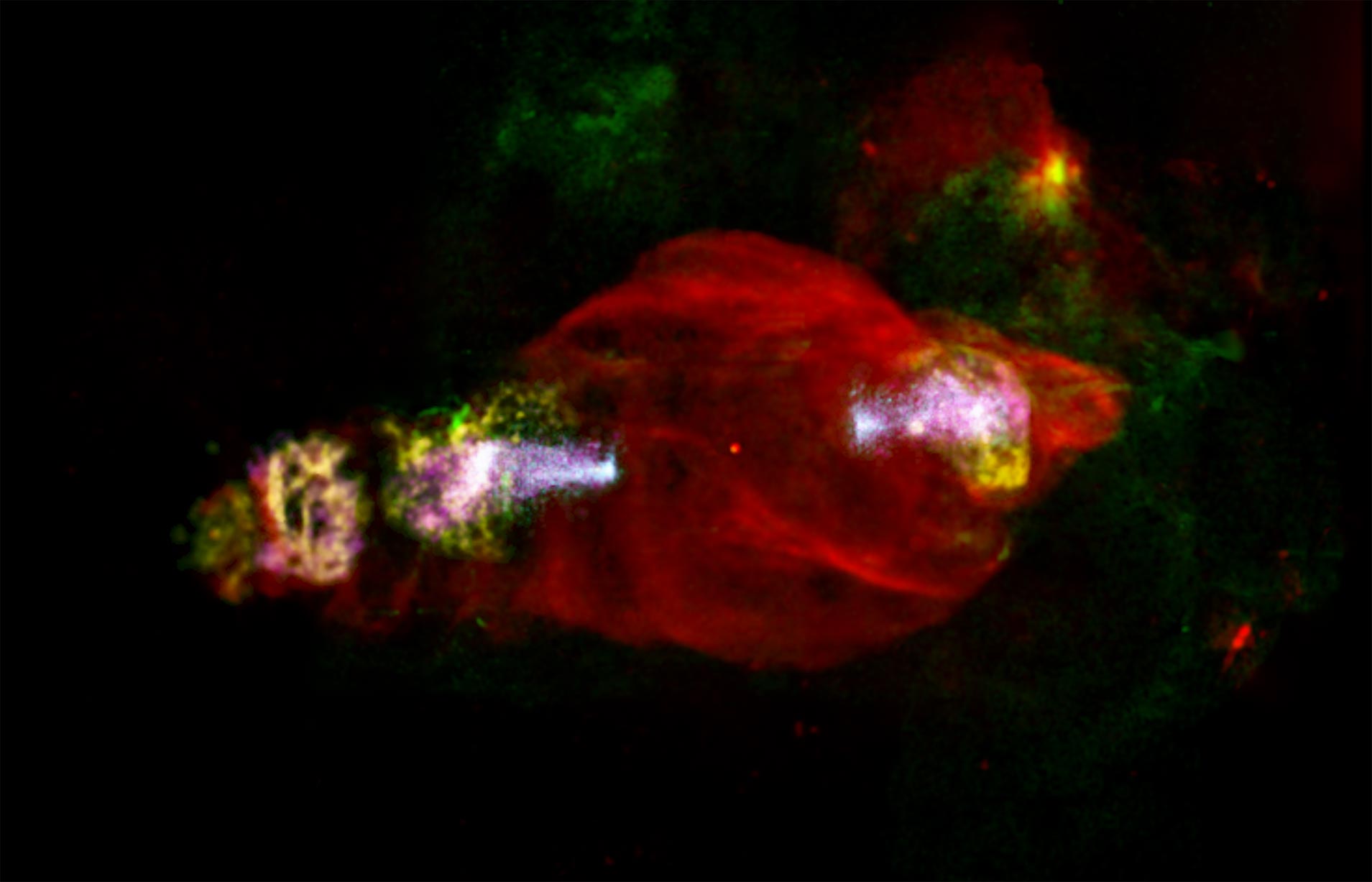La Nebulosa del Manatí o W50, capturada por el Observatorio espacial de rayos X XMM-Newton, también conocida como Misión de espectroscopia de rayos X de alto rendimiento y Misión de rayos X de múltiples espejos Crédito: S. Safi -Harb et al (2022) )
La nave espacial XMM-Newton de la Agencia Espacial Europea ha tomado rayos X de esta hermosa criatura cósmica, conocida como la Nebulosa del Manatí, identificando la ubicación de una aceleración inusual de partículas en su «cabeza».
Se cree que la Nebulosa del Manatí, también conocida como W50, es un gran remanente de supernova creado cuando una estrella gigante explotó hace unos 30.000 años, lanzando sus capas de gas por el cielo. Es una de las características más grandes conocidas de este tipo, que abarca el tamaño equivalente a cuatro lunas llenas.
A agujero negro permanece en su núcleo, lo cual es inusual para un supernova descansar. Conocido como SS 433, este «microquasar» central emite poderosos chorros de partículas que viajan a velocidades cercanas a una cuarta parte de la velocidad de la luz que perforan las capas gaseosas, creando la forma de doble lóbulo.

Esta ilustración muestra la misión XMM-Newton, el mayor satélite científico construido por la ESA (Agencia Espacial Europea) hasta la fecha, en órbita terrestre. Crédito: ESA/D. ducros
SS 433 se identifica con el punto rojo en el medio de la imagen. Los datos de rayos X adquiridos por XMM-Newton se muestran en amarillo (rayos X suaves), magenta (rayos X de energía media) y cian (emisión de rayos X duros), mientras que el rojo corresponde a las longitudes de onda ópticas de radio y la imagen verde. por el Very Large Array y el Observatorio Skinakas en Grecia, respectivamente.[{» attribute=»»>NASA NuSTAR and Chandra data were also used for the study (not shown in this image).
The nebula attracted attention in 2018 when the High-Altitude Water Cherenkov Observatory, which is sensitive to very high energy gamma-ray photons, revealed the presence of highly energetic particles (hundreds of tera electron volts), but could not pinpoint from where within the Manatee the particles were originating.
XMM-Newton was crucial in homing in on the region of particle acceleration in the X-ray jet blasting from the Manatee’s head, which begins about 100 light years away from the microquasar (represented by the magenta and cyan colors towards the left side SS 433) and extends to approximately 300 light years (coinciding with the radio ‘ear’ where the shock terminates).

The Manatee Nebula as imaged by the Very Large Array (VLA). Credit: B. Saxton, (NRAO/AUI/NSF) from data provided by M. Goss, et al.
Samar Safi-Harb of the University of Manitoba, Canada, who led the study, says “thanks to the new XMM-Newton data, supplemented with NuSTAR and Chandra data, we believe the particles are getting accelerated to very high energies in the head of the Manatee through an unusually energetic particle acceleration process. The black hole outflow likely made its way there and has been re-energized to high-energy radiation at that location, perhaps due to shock waves in the expanding gas clouds and enhanced magnetic fields.”
The nebula acts as a nearby laboratory for exploring a wide range of astrophysical phenomena associated with the outflows of many galactic and extragalactic sources and will be subject to further investigation. Furthermore, follow-up studies by European Space Agency’s future Athena X-ray observatory will provide even more sensitive details about the inner workings of this curious cosmic Manatee.
Reference: “Hard X-ray emission from the eastern jet of SS 433 powering the W50 ‘Manatee’ nebula: Evidence for particle re-acceleration” by Samar Safi-Harb, Brydyn Mac Intyre, Shuo Zhang, Isaac Pope, Shuhan Zhang, Nathan Saffold, Kaya Mori, Eric V. Gotthelf, Felix Aharonian, Matthew Band, Chelsea Braun, Ke Fang, Charles Hailey, Melania Nynka and Chang D. Rho, Accepted, Astrophysical Journal.
arXiv:2207.00573
También te puede interesar
-
El satélite astronómico chino Einstein Probe captura las primeras imágenes en órbita – Xinhua
-
Las estrellas de neutrones podrían capturar agujeros negros primordiales
-
Detectabilidad de biofirmas de superficie para exoplanetas rocosos fotografiados directamente
-
¿Júpiter tiene anillos? Sí
-
Estación espacial china alcanzada por desechos espaciales

